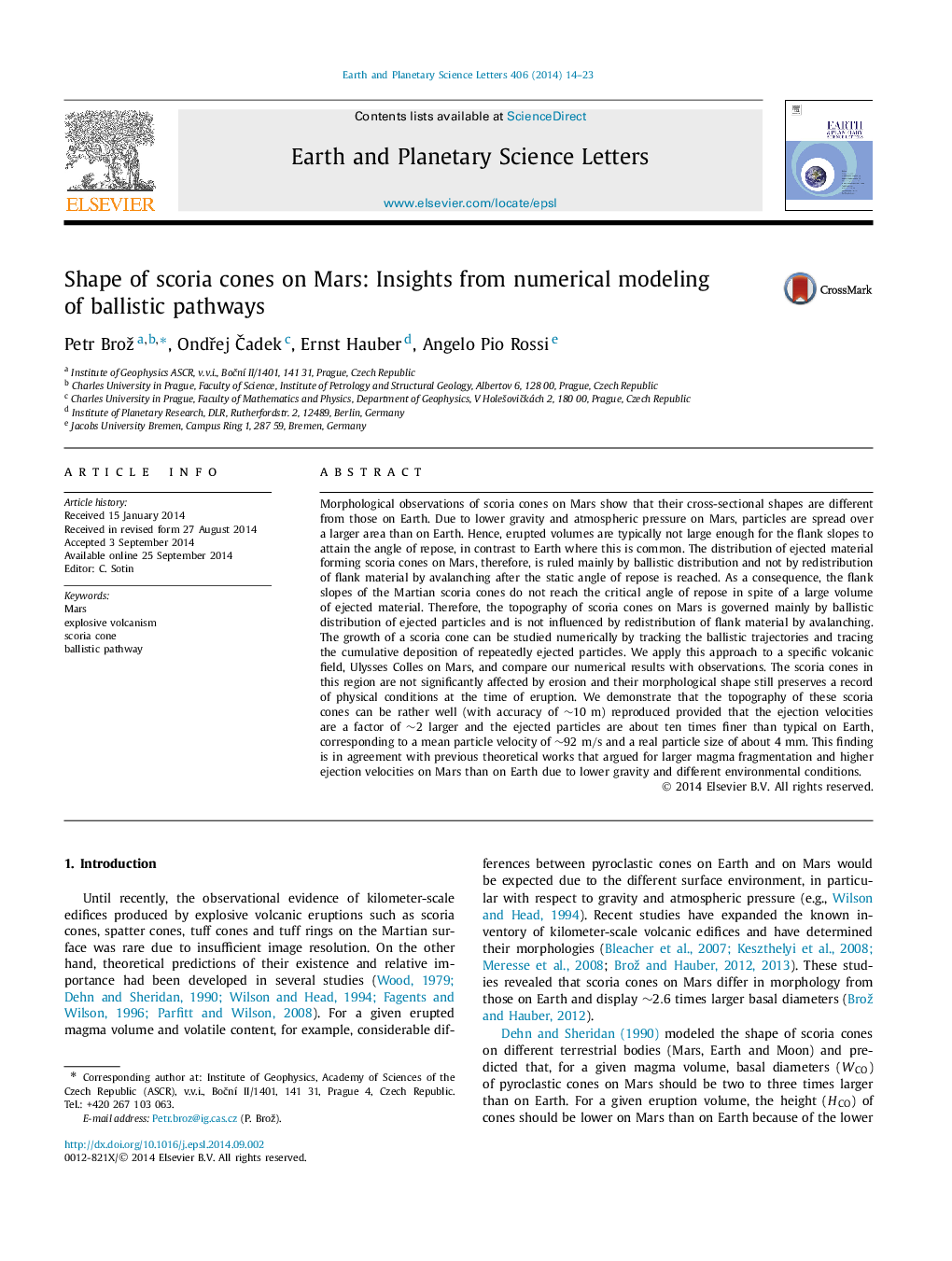| کد مقاله | کد نشریه | سال انتشار | مقاله انگلیسی | نسخه تمام متن |
|---|---|---|---|---|
| 6428960 | 1634750 | 2014 | 10 صفحه PDF | دانلود رایگان |
- We numerically model growth of Martian scoria cones by tracking ejected particles.
- Erupted volume of material is insufficient to build cones at the angle of repose.
- Position and distribution of ejected particles are ruled by ballistic emplacement.
- To model the observed shapes, initial parameters have to vary from those on Earth.
- Ejected particles have to be at least two times faster and ten times smaller.
Morphological observations of scoria cones on Mars show that their cross-sectional shapes are different from those on Earth. Due to lower gravity and atmospheric pressure on Mars, particles are spread over a larger area than on Earth. Hence, erupted volumes are typically not large enough for the flank slopes to attain the angle of repose, in contrast to Earth where this is common. The distribution of ejected material forming scoria cones on Mars, therefore, is ruled mainly by ballistic distribution and not by redistribution of flank material by avalanching after the static angle of repose is reached. As a consequence, the flank slopes of the Martian scoria cones do not reach the critical angle of repose in spite of a large volume of ejected material. Therefore, the topography of scoria cones on Mars is governed mainly by ballistic distribution of ejected particles and is not influenced by redistribution of flank material by avalanching. The growth of a scoria cone can be studied numerically by tracking the ballistic trajectories and tracing the cumulative deposition of repeatedly ejected particles. We apply this approach to a specific volcanic field, Ulysses Colles on Mars, and compare our numerical results with observations. The scoria cones in this region are not significantly affected by erosion and their morphological shape still preserves a record of physical conditions at the time of eruption. We demonstrate that the topography of these scoria cones can be rather well (with accuracy of â¼10 m) reproduced provided that the ejection velocities are a factor of â¼2 larger and the ejected particles are about ten times finer than typical on Earth, corresponding to a mean particle velocity of â¼92 m/s and a real particle size of about 4 mm. This finding is in agreement with previous theoretical works that argued for larger magma fragmentation and higher ejection velocities on Mars than on Earth due to lower gravity and different environmental conditions.
Journal: Earth and Planetary Science Letters - Volume 406, 15 November 2014, Pages 14-23
